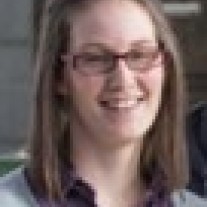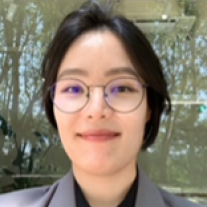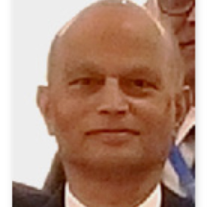GIF Economic Modelling Working Group
The GIF Economic Modelling Working Group (EMWG) provides a platform and methodology for the assessment of Generation IV (Gen-IV) systems against economic-related goals. It was formed in 2003.
The EMWG supports the Generation IV goals related to improved economics:
"Generation IV nuclear energy systems will have a clear life-cycle cost advantage over other energy sources and a level of financial risk comparable to other energy projects."
Scope of work of the GIF Economic Modelling Working Group
The GIF Economic Modelling Working Group (EMWG) was established in 2003 to provide a platform and methodology for the assessment of Generation IV (Gen-IV) systems against economic-related goals.
There are two economic-related goals: one is to have a life-cycle cost advantage over other energy sources (i.e., to have a lower levelized unit cost of energy), and the other is to have a level of financial risk comparable to other energy projects (i.e., to have a similar total investment cost at the time of commercial operation).
The EMWG also provides a platform to study the challenges and opportunities for the deployment of Generation IV systems in future low-carbon energy markets, including flexibility requirements for integrating in grids with significant renewable resources and improving cost competitiveness of Gen IV systems through co-generation.
GIF EMWG Members and Leadership
First established in 2003, the EMWG has long standing members from Australia, Canada, China, France, Japan, Republic of Korea, Russia, South Africa, United Kingdom, and United States of America, and observers from the IAEA and the OECD/NEA.

Ms
Megan MOORE

Ms
Fiona REILLY
Expertise: Capital Projects
Fiona Reilly is an accomplished executive and non-executive director, and chair with three decades of in-depth, specialised knowledge in the energy and infrastructure sectors. Throughout her career, she has worked with diverse stakeholders at board and executive levels, including financiers, government departments, governing bodies, engineers, scientists, and other advisors. Her skills include strategic and policy advice and regulatory expertise, deal structuring and financing, project and asset management, claims and disputes. She is recognised as an expert in the development and financing of nuclear projects. In January 2018 she was appointed Chair of the Expert Finance Working Group on Small Reactors by BEIS and produced the Market Framework for Financing Small Nuclear in September 2018. She continues to work on low carbon projects around the globe, including the deployment of large and small reactors.

Dr
Jason K. Hansen
Expertise: energy economics
Jason K Hansen is a Distinguished Research Economist at the Idaho National Laboratory in the United States with a PhD from the University of New Mexico in environmental and natural resource economics. As a practicing energy economist, he focuses on clean energy transitions, especially those utilizing nuclear energy. In addition to research at INL, and as adjunct faculty, Hansen teaches economics and energy economics in the College of Business at Idaho State University and in the J.P. Morgan Center for Commodities & Energy Management at the University of Colorado Denver. Before joining INL, Hansen was on the faculty of the Graduate School of Business and Public Policy at the Naval Postgraduate School.

Ms
Seoyeong JEONG
Seoyeong Jeong is an experienced R&D project manager and policy analyst for international collaborations in the nuclear energy field. Her academic background is in political science and economics. She has been involved in GIF’s joint R&D endeavors for proliferation resistance and physical protection, economics modelling, and 3S (Safety, Safeguards and Security) interfaces.
GIF EMWG engagement and cooperation
The EMWG continues to engage with the IAEA, OECD/NEA Working Party on Economics, SIAP, and other GIF working groups/task forces on suggested updates, particularly with a view toward evaluating small modular reactors (SMRs). The EMWG will also collaborate with key industry players that are developing SMRs to inform the development of cost-estimating guidelines. In 2025, once the updated guidelines and G4ECONS v4.0 are released, the EMWG will work with the GIF Education and Training Working Group (ETWG) to launch an improved training series for both existing and new users of these EMWG tools.
GIF EMWG key results, deliverables and publications
Cost Estimating Guidelines for Generation IV Nuclear Energy Systems and G4ECONS Model
The EMWG published Cost Estimating Guidelines for Generation IV Nuclear Energy Systems (GIF, 2007) and released the Excel-based software package, G4ECONS v2.0, providing the means to calculate the levelized cost of energy and the total investment cost so as to evaluate Gen IV systems against GIF economic goals. These resources were made available to the public through the GIF Technical Secretariat, resulting in subsequent publications that demonstrate the EMWG methodology for the economic assessments of Gen III and Gen IV systems, as well for co-generation applications, such as hydrogen production.
G4ECONS v2.0 was also benchmarked against economic models developed by the IAEA including the Nuclear Economics Support Tool and the Hydrogen Economic Evaluation Programme. The results were published in peer-reviewed publications. Lessons learnt from the benchmarking exercise and users’ feedback informed the refinement of the G4ECONS tool. The latest version, G4ECONS v3.0, was released in October 2018 with an improved user interface. In 2022, the EMWG launched a survey to collect user feedback on G4ECONS v3.0 and identify potential model improvements. The unique aspects of SMRs, non-electric applications, and embedded sensitivity analysis were identified as areas of greatest interest for future developments. In addition, many users expressed an interest in additional training sessions on the G4ECONS tool. The EMWG will also embark on a multi-year effort to update and refresh the 2007 Cost Estimating Guidelines report and G4ECONS v3.0 model.
In 2016, the EMWG started to investigate challenges and opportunities for the deployment of Gen IV systems in emerging energy markets with an increasing share of renewable energy resources. The EMWG worked collaboratively with the GIF SIAP to investigate challenges and opportunities for the deployment of Gen IV systems in electricity markets with a significant penetration of renewable energy resources and to produce a position paper for the GIF Policy Group. An abridged version of the EMWG position paper on the impact of increasing shares of renewables on the deployment prospects of Gen IV systems was presented at the 4th GIF Symposium (2018) and an executive summary was posted on the GIF website.
The update to the cost estimating guidelines and the development of G4ECONS v4.0 are underway to expand discussion on scale and modularity, aiming to better address SMRs and to further exploring how to best provide cost estimates for direct steam use and co-generation of both heat and electricity.
Nuclear Energy: An ESG investable Asset Class:
In 2021, the EMWG worked with the finance industry to produce a report, Nuclear Energy: An ESG Investable Asset Class. The report considered the nuclear industry’s ability to report against a broad range of environmental, social and governance (ESG) data collection and accounting metrics. The report was required to help the finance industry to start to consider nuclear as an investable asset class. Each project can then be considered on its own merits. For a nuclear project to access finance (particularly climate finance), the project itself will need to be able to report well against a broad range of ESG considerations / criteria. Enabling nuclear to be considered as an ESG-investable asset class is the first step to enabling the flow of finance. The report will be maintained and updated regularly to enable it to be used by the finance industry as a reference guide.
The report can be viewed as a blueprint on how to set up a project and enable it to access finance. It received significant press coverage (e.g., from Standard & Poor’s, Reuters, World Nuclear News) and was successfully presented in a dedicated workshop at the 2021 World Nuclear Exhibition.
Advanced Nuclear Technology Cost Reduction Strategies and Systematic Economic Review:
Also in 2021, the Advanced Nuclear Technology Cost Reduction Strategies and Systematic Economic Review (ANTSER) process was developed to provide a framework for evaluating nuclear cost reduction strategies. This initial report provided an example strategy on “functional confinement”. In 2022 and in 2023 respectively, the second ANTSER for “modularity at scale, and the third strategy is for “technology-inclusive cost reduction” were developed.
This report provides a process to produce a methodological framework for evaluating nuclear cost reduction strategies. Key areas for nuclear cost reduction strategies and technologies are categorized under design, construction/production, and project management. Application of the framework is illustrated on reactor designs that are based on cost reduction through “functional confinement”, followed by a presentation of a more rigorous application of the methodology.
The report was written with three goals in mind: first, to create a methodology for creating useful cost reduction strategies that cut across a broad set of advanced nuclear reactor technologies; second, to generate an example cost reduction strategy using the methodology; and third, to provide a path to improve the methodology and produce additional cost reduction strategies. The EMWG can lead to future cost reduction strategy studies, but the range and impact of this body of work is greatly enhanced by direct contributions from the GIF methodology working groups, task forces, and system steering committees for the six Gen IV reactors, as well as SIAP.
| Technology | Scale Applicability | Cost Implications | Technology Readiness Level (TRL) | Transportability | Further RD&D |
|---|---|---|---|---|---|
| LWR | Mid- to large-sized plants | Hinders cost-effective modularization of the BOP. | TRL 8-9 | Not transportable as modules due to large size of factory equipment (reactor vessel and internals, steam generators, heat exchangers, etc). | Ready to use. |
| HTGR | Micro- to medium-size plants | Enables high degrees of modularization (DoM) at the reactor and BOP levels. Allows for the creation of standardized units. | TRL 8-9 | Transportable in single units or multiple containers to the deployment site. | Needs further RD&D on fuel certification. |
| SFR | Micro- to medium-size plants | Enables high DoM at the reactor and BOP levels. Allows for the creation of standardized units. | TRL 8-9 | Transportable in single or multiple containers to the deployment site. | Needs further RD&D on safety and performance. |
| Precast construction | Micro- to large-size non-LWRs | Enables standardization of structures, such as containment buildings. Requires on-site assembly. | TRL 6 | Precast components are transportable but limited to the weight of individual modular units, depending on road and site regulations and equipment. | Requires research on whether performance satisfies regulatory requirements against external hazards. |
| Steel-plate composite construction | Micro- to large-size reactors | Enables standardization of structures, such as containment buildings. Requires welding, high volumes of concrete casting, workmanship and assembly on-site. | TRL 9 | Only the steel portions of the modules are transportable. | Has been approved, developed, and demonstrated in real nuclear energy applications. |
Table - Assessment of Potential Modular Approaches
from 2022 GIF EMWG Report: Advanced nuclear technology cost reduction strategies and systematic economic review cost reduction strategy #2: design - modularity at scale
GIF EMWG FAQ
The GIF EMWG has gathered a set of frequently asked questions and proposed answers to these questions. You can find this FAQ by following the link below.
Key GIF EMWG Events
The Group holds meetings twice a year, one in spring and the other in fall. For in-person meetings, they are scheduled either back-to-back or in the margins of GIF Experts Group/Policy Group (EG/PG) Common Days meetings. The group also utilizes interim meetings if needed to follow on the progress of action items.
Bi-Annual meeting of EMWG on April 19 2023
Special meeting of EMWG on July 19 2023
Bi-Annual meeting of EMWG on October 5 2023
Bi-Annual meeting of EMWG scheduled for May 13 2024
Bi-Annual meeting of EMWG scheduled for October 2024
The Financing Task Force gathered again to work on the 2nd edition of the ESG report. The group held its kick-off meeting in September 2023, and will carry out discussions through facilitating regular conference calls.
Kick-off meeting of Financing Task Force on September 12 2023
2nd meeting of Financing Task Force on January 16 2024
GIF EMWG relevant reference materials
2022 Advanced Nuclear Technology Cost Reduction Strategies and Systematic Economic Review (ANTSER): N° 2: Design - Modularity at Scale, Kurt E.G. and D.E. Shropshire, Economic Modelling Working Group (EMWG)
2021 Advanced Nuclear Technology Cost Reduction Strategies and Systematic Economic Review (ANTSER) # 1, Shropshire, D.E, A. Foss and E. Kurt, GIF Economic Modelling Working Group (EMWG)
2021 "Nuclear Energy: An ESG Investible Asset Class", Finance industry taskforce (the Taskforce) and Fiona Reilly, Co-Chair of the GIF EMWG and Chair of the Taskforce
2022 Overnight Capital Cost of the Next AP1000, from Korous Shirvan at MIT
2022 Pathways to Decarbonization from Independent Electricity System Operator (IESO) in Canada
2022 New Perspectives for Financing Nuclear New Builds, from OECD-NEA
2023 Future Cost Refinements Announced for First US SMR Plant, World Nuclear News/NuScale
Active GIF EMWG Participants
Organisation | GIF EMWG Member |
|---|---|
IAEA | MBERIA, Nancy |
AUSTRALIA | GRAETZ, Geordie |
CANADA | DE LA CHEVROTIÈRE, Antoine |
MENDOZA, Alberto | |
MOORE, Megan | |
CHINA | LIU, Lin |
FRANCE | COQUARD, Julien |
JAPAN | KATO, Atsushi |
REPUBLIC OF KOREA | YOON, Kyung Soo |
RUSSIA | USANOV, Vladimir |
SOUTH AFRICA | KESHAW, Jeetesh |
MOKGALAPA, Naphtali | |
UNITED KINGDOM | REILLY, Fiona |
UNITED STATES OF AMERICA | HANSEN, Jason |
HOFFMAN, Edward | |
Previous Co-Chairs and outstanding contributors

Mr
David SHROPSHIRE
Initial and lead author of GIF EMWG ANTSER strategies #1 and #2.

Dr
Ramesh SADHANKAR
Led the efforts on EMWG Position paper, update of the EMWG Terms of Reference and v3 of the G4ECONS model.